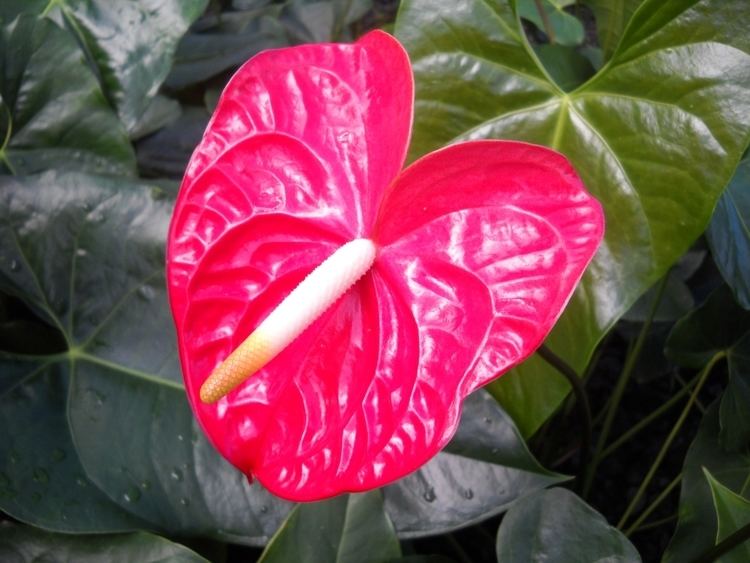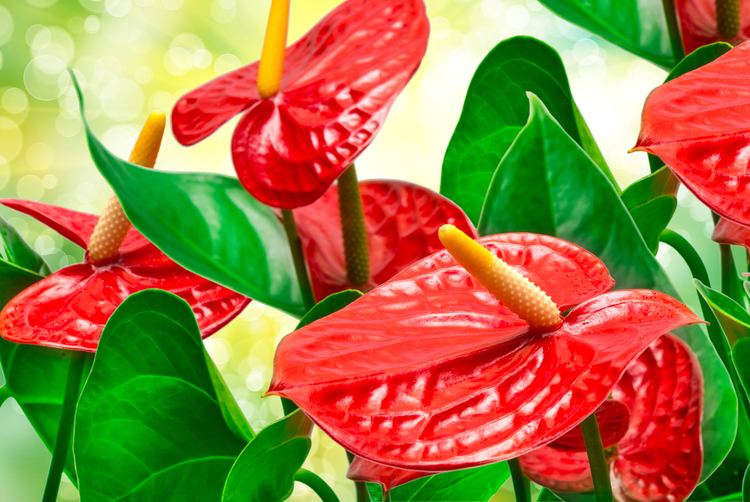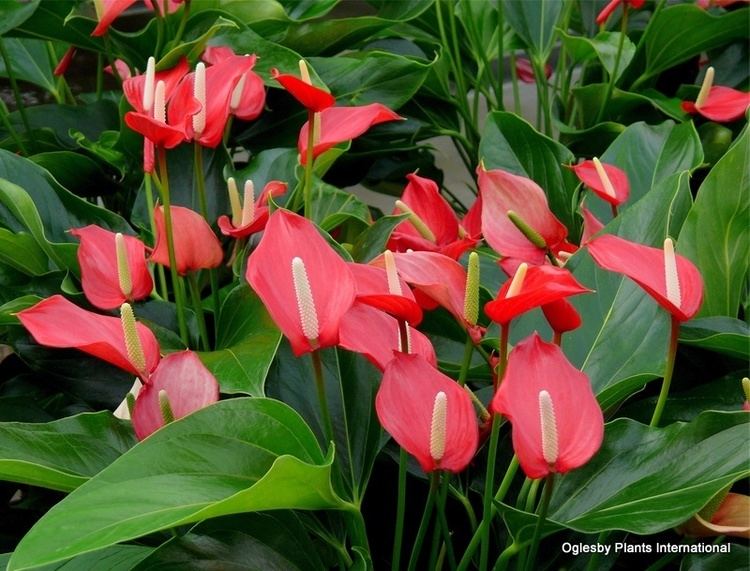Tribe Anthurieae Higher classification Arum | Scientific name Anthurium Rank Genus | |
 | ||
Lower classifications Anthurium andraeanum, Flamingo flower, Anthurium crystallinum, Anthurium hookeri, Anthurium superbum | ||
Growing the anthurium red root orb anthurium hybrid
Anthurium (/ænˈθjuːriəm/; Schott, 1829), is a genus of about 1000 species of flowering plants, the largest genus of the arum family, Araceae. General common names include anthurium, tailflower, flamingo flower, and laceleaf.
Contents
- Growing the anthurium red root orb anthurium hybrid
- How to pollinate anthurium plant
- Description and biology
- Cultivation
- Propagation
- Species
- References

The genus is native to the Americas, where it is distributed from northern Mexico to northern Argentina and parts of the Caribbean.

How to pollinate anthurium plant
Description and biology

Anthurium is a genus of herbs often growing as epiphytes on other plants. Some are terrestrial. The leaves are often clustered and are variable in shape. The inflorescence bears small flowers which are perfect, containing male and female structures. The flowers are contained in dense spirals on the spadix. The spadix is often elongated into a spike shape, but it can be globe-shaped or club-shaped. Beneath the spadix is the spathe, a type of bract. This is variable in shape, as well, but it is lance-shaped in many species. It may extend out flat or in a curve. Sometimes it covers the spadix like a hood. The fruits develop from the flowers on the spadix. They are juicy berries varying in color, usually containing two seeds.
The spadix and spathe are a main focus of Anthuirium breeders, who develop cultivars in bright colors and unique shapes. Anthurium scherzerianum and A. andraeanum, two of the most common taxa in cultivation, are the only species that grow bright red spathes. They have also been bred to produce spathes in many other colors and patterns.
Anthurium plants are poisonous due to calcium oxalate crystals. The sap is irritating to the skin and eyes.
Cultivation

Like other aroids, many species of Anthurium can be grown as houseplants, or outdoors in mild climates in shady spots. They include forms such as A. crystallinum f peltifolium with its large, velvety, dark green leaves and silvery white venation. Many hybrids are derived from A. andreanum or A. scherzerianum because of their colorful spathes. They thrive in moist soils with high organic matter. In milder climates the plants can be grown in pots of soil. Indoors plants thrive at temperatures between 16°C-22°C (60°F-72°F) and at lower light than other house plants. Wiping the leaves off with water will remove any dust and insects. Plant in pots with good root systems will benefit from a weak fertilizer solution every other week. In the case of vining or climbing Anthuriums, the plants benefit from being provided with a totem to climb.
Propagation
Anthurium can be propagated by seed or vegetatively by cuttings. In the commercial Anthurium trade, most propagation is via tissue culture.
Species
For a full list, see the List of Anthurium species.
In 1860 there were 183 species known to science, and Heinrich Wilhelm Schott defined them in 28 sections in the book Prodromus Systematis Aroidearum. In 1905 the genus was revised with a description of 18 sections. In 1983 the genus was divided into the following sections:
